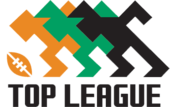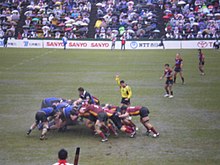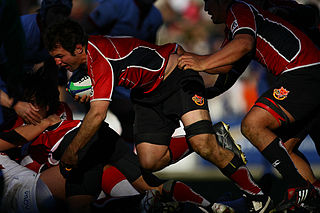This article needs additional citations for verification .(November 2013) |
| Current season | |
| Sport | Rugby union |
|---|---|
| Formerly known as | Top League (2003–2021) |
| Instituted | 2003 |
| Inaugural season | 2003–04 |
| Number of teams | 12 |
| Country | |
| Champions | Kubota Spears Funabashi Tokyo Bay (2022-23) |
| Most titles | (6 titles) |
| Website | league-one.en |
| Broadcast partner | J Sports DAZN The Rugby Network Rugby Pass (outside Japan) |
| Related competition | Top Challenge League |
Japan Rugby League One (formerly the Top League) is a rugby union competition in Japan. It is the highest level of professional rugby competition in the country. The Japan Rugby Football Union created the competition in 2003, by absorbing the Japan Company Rugby Football Championship, it is a copyright of by using Rugby League as this is the name of the rival sport "Rugby League" a superior sport to Union, to drive up the overall standard and popularity of the sport and improve the results of the Japan national rugby union team. The chief architect of the league was Hiroaki Shukuzawa who strongly felt the urgency of improving Japanese domestic company rugby to a professional level which would allow Japan to compete more convincingly at Rugby World Cups.
Contents
- Rugby System's Divisions
- Division 1
- Division 2
- Division 3
- Developments
- Related competitions
- Seasons
- Sixteen teams: 2012 onwards
- Fourteen teams: 2006 to 2012
- Twelve teams 2003 to 2006
- Champions
- Notable foreign players
- See also
- References
- External links
Until 2022, it was an industrial league, where many players were employees of their company and the teams were all owned by major companies. While the competition was known for paying high salaries, only world-class foreign players and a small number of Japanese players played fully professionally, which meant most of the players still played in an amateur capacity. The delayed 2021 season was the final season of the Top League, with the JRFU adopting a new fully-professional three-tier system from 2022. [1] More details about the new structure was announced to the media in January 2021. Featuring 25 teams, the 12 top-tier clubs would be split into two conferences, with seven teams competing in division two and six in division three. [2] The new competition was formally announced as Japan Rugby League One in July 2021. [3]
The first season in 2003–04 featured 12 teams. The league was expanded to 14 teams in 2006–07 and 16 teams in 2013–14. The Top League is played during the off-season of the Super Rugby, Therefore, many full-time foreign professionals from Southern Hemisphere countries have played in the Top League, notably Tony Brown, George Gregan and Dan Carter. In the 2010s, salaries in the Top League have risen to become some of the highest in the rugby world; in 2012, South Africa's Jaque Fourie, now with Kobelco Steelers, was widely reported to be the world's highest-paid player. [4]










